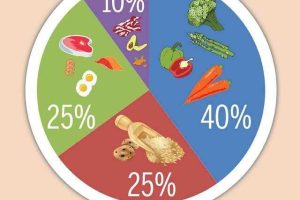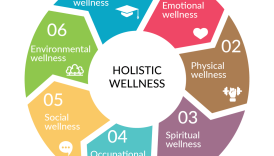Maximizing Your Health Potential Through a Balanced Diet

Introduction to Maximizing Health Potential
Importance of a Balanced Diet
In the quest for better health, one fundamental principle stands out: the importance of a balanced diet. It’s not just about counting calories or obsessing over macronutrients; it’s about nourishing the body with the right mix of vitamins, minerals, proteins, fats, and carbohydrates. A balanced diet paves the way for improved energy levels, enhanced mood, and overall well-being. Imagine starting your day feeling sluggish due to an unbalanced breakfast. By choosing a meal that includes protein, fiber, and healthy fats—like oatmeal topped with fruits and nuts—you not only experience more sustained energy, but you also set a positive tone for the rest of the day. To achieve balance, consider the following components:
- Maximizing Your Health Potential Through a Balanced Diet
- Introduction to Maximizing Health Potential
- Importance of a Balanced Diet
- Understanding Nutritional Needs
- Building a Foundation with Whole Foods
- Incorporating Fruits and Vegetables
- Choosing Whole Grains
- Protein Sources for Optimal Health
- Lean Meats and Plant-Based Proteins
- Importance of Omega-3 Fatty Acids
- Essential Vitamins and Minerals for Wellness
- Sources of Vitamin C and Iron
- Benefits of Calcium and Vitamin D
- Hydrating for Health and Wellbeing
- Importance of Water Intake
- Incorporating Herbal Teas and Infusions
- Fruits and Vegetables: Aim for a variety of colors to ensure a wide range of nutrients.
- Whole Grains: Choose brown rice, quinoa, and whole wheat over refined options for improved digestion and energy.
- Lean Proteins: Incorporate foods like chicken, fish, beans, and legumes.
Understanding Nutritional Needs
Understanding individual nutritional needs is equally crucial, as these vary widely based on age, sex, activity level, and health conditions. Listening to what your body needs can make all the difference. For instance, an active teenager will require more protein and carbohydrates to fuel their activities compared to a sedentary adult. In contrast, older adults often need fewer calories but more nutrients, especially calcium and vitamin D for bone health. Keep these tips in mind to better understand your nutritional needs:
- Consult a Professional: A registered dietitian can help you tailor a plan that fits your lifestyle.
- Pay Attention to Hunger Cues: Learning to recognize physical hunger versus emotional cravings can promote healthier eating habits.
- Track Your Intake: Using nutrition apps can provide insight into what you’re consuming and what may need adjustment.
As you embark on your journey to maximize your health potential, remember that a balanced diet and an understanding of your unique nutritional needs are powerful tools in crafting a healthier lifestyle.
Building a Foundation with Whole Foods
Incorporating Fruits and Vegetables
Continuing the journey toward maximizing health potential, one of the most effective strategies is to build a foundation with whole foods, specifically by incorporating an abundance of fruits and vegetables into daily meals. These natural powerhouses are not only delicious but also packed with essential vitamins, minerals, and antioxidants. Consider this: when a friend shared how adding just one extra serving of vegetables to her dinner transformed her meals from mundane to vibrant, it sparked her enthusiasm for healthy eating. She later discovered that diversifying colors—like the deep green of spinach or the bright orange of carrots—offered her a wider range of nutrients. To help get started, here are some easy tips:
- Add to Every Meal: Include fruits and veggies in breakfast (like a smoothie), lunch (like a salad), and dinner (like steamed broccoli).
- Snack Wisely: Keep cut-up veggies or fresh fruits handy for mid-afternoon snacks. They are filling and help reduce cravings for processed foods.
- Experiment with Recipes: Try new fruits and vegetables each week, perhaps by exploring ethnic cuisines that feature diverse plant-based dishes.
Choosing Whole Grains
In tandem with fruits and vegetables, choosing whole grains is vital for a balanced diet. Whole grains provide essential fiber, which aids digestion and helps maintain steady energy levels. Switching from refined grains to whole grains can be a game-changer—both for health and satiety. A personal favorite is substituting white bread with whole grain options. Not only does it add a nutty flavor to sandwiches, but it also keeps hunger at bay much longer. To make the transition smoother, consider these options:
- Opt for Whole Grain Varieties: Look for products labeled as “100% whole grain” or “whole wheat.”
- Incorporate Different Grains: Try quinoa, brown rice, barley, or farro. They add unique textures and flavors to meals.
- Read Labels: Many packaged foods may appear healthy, but checking for whole grains as the first ingredient ensures you’re making the right choice.
By focusing on incorporating a variety of fruits, vegetables, and whole grains, one can lay a robust foundation for a healthier lifestyle that aids in maximizing overall health potential.
Protein Sources for Optimal Health
Lean Meats and Plant-Based Proteins
As we delve deeper into maximizing health potential, an essential element in this journey is protein—both from lean meats and plant-based sources. Protein plays a critical role in building and repairing tissues, supporting immune function, and even promoting a feeling of fullness to help manage weight. Consider a friend who recently transitioned to a flexitarian lifestyle. She discovered that incorporating a mix of lean meats and plant-based proteins not only simplified meal prep but also expanded her cooking horizons. By combining turkey or chicken with beans, lentils, and quinoa, she was able to create heartier dishes while still keeping meals balanced and nutritious. Here are some protein-rich options to consider:
- Lean Meats: Skinless poultry, lean cuts of beef, pork loin, and fish like cod or tilapia are excellent choices.
- Plant-Based Proteins: Beans, lentils, chickpeas, and tofu are all fantastic sources that cater to both vegetarians and meat-eaters alike.
- Dairy Alternatives: Greek yogurt, cottage cheese, or fortified plant-based milks can provide additional protein as well.
Importance of Omega-3 Fatty Acids
In addition to protein, incorporating sources of omega-3 fatty acids into the diet is vital for optimal health. These healthy fats are known for their anti-inflammatory properties, heart health benefits, and even positive effects on brain function and mood. A personal anecdote highlights this point: after a family member started adding fatty fish like salmon to their weekly meals, they noticed an improvement in their overall mood and energy levels. Not every meal has to be centered around fish; there are plenty of alternative dietary sources. Key sources of omega-3 fatty acids include:
- Fatty Fish: Salmon, mackerel, sardines, and herring are all rich in omega-3.
- Plant Sources: Flaxseeds, chia seeds, walnuts, and algae-based supplements can provide these essential fats for those following a plant-based diet.
- Fortified Foods: Some eggs and dairy products are fortified with omega-3, which can be an easy way to boost intake.
By thoughtfully incorporating both lean meats, plant-based proteins, and omega-3 fatty acids into daily eating habits, individuals can significantly enhance their nutritional profile and move one step closer to achieving optimal health.
Essential Vitamins and Minerals for Wellness
Sources of Vitamin C and Iron
Continuing the journey to maximize health potential, it’s essential to focus on vitamins and minerals that play pivotal roles in overall wellness. Among them, vitamin C and iron stand out for their unique benefits and bodily functions. For instance, a friend of mine once struggled with frequent colds and fatigue. After a visit to a nutritionist, they discovered that increasing their intake of vitamin C and iron-rich foods could substantially bolster their immune system and energy levels. Vitamin C is crucial for repairing tissues, improving skin health, and promoting a strong immune system. Here are some excellent sources:
- Fruits: Oranges, strawberries, kiwi, and guava are delicious ways to boost vitamin C intake.
- Vegetables: Bell peppers, broccoli, and spinach are not only versatile vegetables but also rich in this important vitamin.
On the other hand, iron is essential for the production of hemoglobin, which carries oxygen in the blood. Low iron levels may lead to fatigue and weakness. To increase iron intake, consider:
- Animal Sources: Lean meats, poultry, and fish.
- Plant Sources: Lentils, chickpeas, quinoa, and fortified cereals. Pairing these with vitamin C-rich foods can enhance iron absorption!
Benefits of Calcium and Vitamin D
As the body requires a balance of vitamins and minerals for optimal functioning, calcium and vitamin D are crucial for maintaining strong bones and teeth. They also support muscle function and nerve transmission. Personal experience illustrates this well. A relative of mine, who started taking more calcium and vitamin D supplements, noticed improved bone health when they began strength training. They learned that these nutrients work synergistically, meaning they are more effective together. To ensure adequate intake, consider these sources:
- Calcium-Rich Foods: Dairy products like yogurt, milk, and cheese, as well as leafy green vegetables and fortified plant-based milks.
- Vitamin D Sources: Fatty fish, egg yolks, and fortified foods, alongside safe sunlight exposure for natural synthesis.
In summary, incorporating a wide array of vitamins and minerals like vitamin C, iron, calcium, and vitamin D into one’s diet is essential for promoting wellness and ultimately enhancing the overall quality of life. By being mindful of food choices, individuals can create a nutrient-dense diet that supports their health goals and well-being.
Hydrating for Health and Wellbeing
Importance of Water Intake
As we continue our exploration of maximizing health potential, one of the most crucial yet often overlooked components is hydration. Our bodies are made up of approximately 60% water, which underscores the importance of maintaining proper fluid levels for various bodily functions, including temperature regulation, nutrient transportation, and waste elimination. A personal narrative highlights this point: after a particularly grueling workout session, a friend noticed significant fatigue and headaches. After consulting with a health coach, they learned that inadequate water intake was a major culprit. By committing to a simple goal to drink more water throughout the day, they quickly experienced improved energy and overall well-being. To gauge your water intake needs, consider these tips:
- General Guidelines: Aim for at least 8 eight-ounce glasses (about 2 liters) of water daily, though individual needs may vary based on activity level and climate.
- Listen to Your Body: Pay attention to signs of dehydration like dry mouth, fatigue, or dark urine, which can indicate a need for more fluids.
- Set Reminders: Utilize apps or alarms to remind you to drink water regularly throughout your busy day.
Incorporating Herbal Teas and Infusions
In addition to plain water, herbal teas and infusions can be delightful and beneficial additions to one’s hydration routine. They not only provide hydration but also introduce a range of flavors and health benefits that go beyond just quenching thirst. A family member who struggles with bloating and digestion found relief after incorporating herbal teas like chamomile and peppermint into her daily habits. Not only were these teas soothing and flavorful, but they also aided her digestion. Consider these popular herbal tea options and their benefits:
- Peppermint Tea: Known for its soothing properties, it can aid digestion and help with headaches.
- Chamomile Tea: A calming herbal tea that can help induce relaxation and improve sleep quality.
- Ginger Tea: Excellent for the digestive system and can help alleviate nausea.
By prioritizing water intake and exploring the world of herbal teas and infusions, individuals can significantly enhance their hydration levels, which plays a fundamental role in promoting health and overall well-being. Remember, staying hydrated keeps not only the body functioning optimally but also positively impacts mood, energy levels, and overall health.





